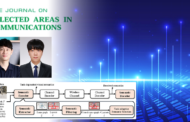As schools reopen, the Korea Disease Control and Prevention Agency (KDCA) reports an uptick in flu cases following a recent decline. Influenza, caused by the influenza virus, presents a serious health threat, particularly in enclosed environments. To combat this, researchers at UNIST have unveiled a groundbreaking technology capable of swiftly detecting airborne viruses, promising improved early detection of viral infections like influenza and COVID-19 in schools and hospitals.
Led by Professor Jaesung Jang from the Department of Biomedical Engineering at UNIST, the team has developed a novel surveillance system designed to capture and analyze airborne viruses without damage. This innovative system has successfully identified type-A influenza viruses, setting it apart from traditional air sampling techniques used in epidemiological studies.
The system operates by drawing air into a device that condenses moisture onto virus particles, effectively capturing them for detection via paper-based immunosensors. Airborne viruses are notoriously small and light, making them challenging to collect directly. By forming water droplets on the viral surface, this approach increases their size and weight, facilitating their collection. The device generates a rapid airflow, causing these virus-laden droplets to collide with the collection surface rather than follow the air current.
Once the virus samples are captured, they are transferred to the immunosensor, which delivers results within 30 minutes. This device uses a detection method based on the antigen-antibody interaction of proteins, specifically targeting hemagglutinin (HA) and nucleoprotein (NP) on the virus surface for identification.
 Figure 1. Schematic representation illustrating the key findings of the study.
Figure 1. Schematic representation illustrating the key findings of the study.
This cutting-edge system significantly reduces the time required for virus detection while also providing insights into the infectious potential of detected viruses. Unlike conventional PCR methods, which rely on identifying viral genetic material (DNA or RNA) and require costly equipment along with several hours for amplification, this technology focuses on detecting hemagglutinin proteins. These proteins correlate with the virus’s infectiousness, allowing for a more accurate assessment of potential risk.
In field tests conducted in an elementary school, the research team collected and analyzed 17 air samples from classrooms, hallways, and cafeterias, successfully detecting the influenza A virus (H1N1) in four instances. In contrast, traditional commercial aerosol sampling equipment failed to identify any viruses in the same environments.
“This technology is not limited to influenza viruses; it has the potential to detect various respiratory viruses, including COVID-19,” said Professor Jang. “With further research to enhance the system, we can greatly improve early infection monitoring and response in public spaces, hospitals, and schools.”
The findings of this research have been published in the journal, Environmental Science & Technology by ACS Publications on March 30, 2025. The study received support from the National Research Foundation of Korea (NRF) and the Ministry of Environment (ME).
Journal Reference
Chanhwi Park, Junbeom Jang, and Jaesung Jang, “Airborne Influenza Virus Surveillance Platform Using Paper-Based Immunosensors and a Growth-Based Virus Aerosol Concentrator,” Environ. Sci. Technol., (2025).













